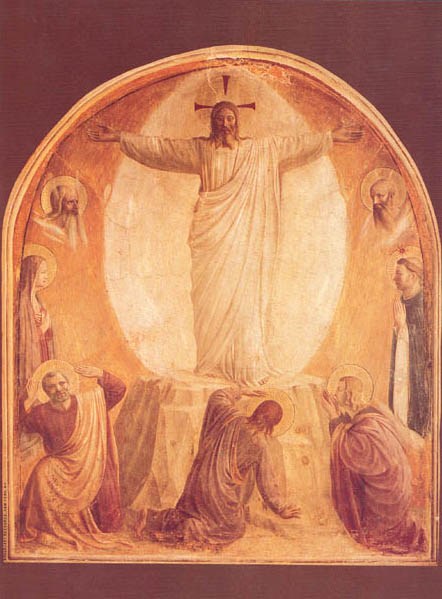Image Details

Scala/Art Resource, New York, NY
Jesus transfigured. With arms outstretched, as if to foreshadow the crucifixion, Jesus undergoes divine glorification in Fra Angelico’s “The Transfiguration.” Painted in about 1440 at the Convent of San Marco, in Florence, Italy, this fresco depicts many details of the event. Jesus wears a white robe. A white aureole, representing the “dazzling” quality of his clothes (Luke 9:29), surrounds his body. The golden halo behind Jesus’ head and the highlighting of his nose and forehead portray Matthew’s report that “his face shone like the sun” (17:2). Moses and Elijah, with whom Jesus spoke, appear as disembodied heads. Moses, at left, is distinguished by the beams of light coming from his head—because his face, too, had shone after talking with God (Exodus 34:29). In the foreground, the three disciples who witnessed the Transfiguration, Peter, John and James, exhibit animated poses of fear and reverence, providing a contrast to Jesus’ dignified stillness. The Virgin Mary, left, and St. Dominic, right, stand below Moses and Elijah. Although Mary and St. Dominic play no part in the Gospel accounts of the Transfiguration, they fulfill an artistic convention by serving as devotional figures who meditate on the action.
